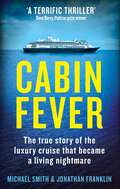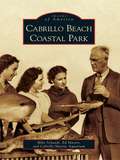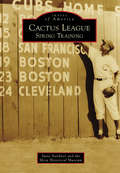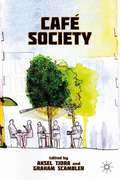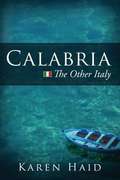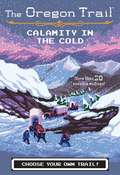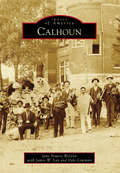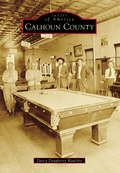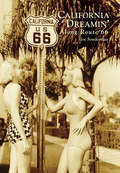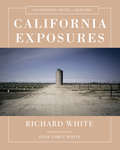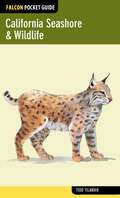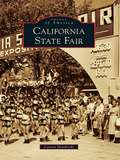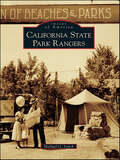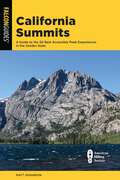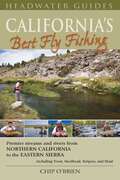- Table View
- List View
Cabin Fever: Trapped on board a cruise ship when the pandemic hit. A true story of heroism and survival at sea
by Jonathan Franklin Michael Smith'Gripping... The authors skillfully capture the fear and claustrophobia. A riveting real-life drama.' Kirkus'Cabin Fever is riveting, taut, and extensively researched. Smith and Franklin have written a page-turning adventure that will keep you reading late into the night.' Martin Dugard, #1 New York Times bestselling author of Taking Paris'A gripping account of how an invisible stowaway - the Covid-19 virus - transformed a fun-filled luxury cruise into an unimaginable nightmare.' Sara Gay Forden, bestselling author of House of Gucci'Extensive first-hand testimony and the authors' brisk, matter-of-fact style enrich this propulsive account of how a holiday cruise turned into a nightmare. Readers will be riveted.' - Publishers WeeklyIn early 2020, the world was on edge. An ominous virus was spreading and no one knew what the coming weeks would bring. Far from the hotspots, the cruise ship Zaandam was preparing to sail from Buenos Aires loaded with 1,200 passengers - British, American, Australian, European and South American tourists, plus 600 crew. Most passengers were over the age of 65.There was concern about the virus in the news but that was oceans away. Escaping to sea at the ends of the earth for a few weeks seemed like it might be a good option. The cruise line had said the voyage would go ahead as scheduled and it would be safe. Within days, people aboard the Zaandam began to fall sick. The world's ports shut down. Zaandam became a top story on the news and was denied safe harbour everywhere. With only two doctors aboard and few medical supplies to test for or treat Covid-19, and with dwindling food and water, the ship wandered the oceans on an unthinkable journey.Cabin Fever is a riveting narrative thriller, taking readers behind the scenes of the ship's complex workings, and below decks into the personal lives of passengers and crew who were caught unprepared for the deadly ordeal that lay ahead. It is a story layered with moments of peril, perseverance and kindness. A remarkable tale that is filled with individual acts of heroism and the struggles and the tragedies of the crew and passengers.
Cabrillo Beach Coastal Park (Images of America)
by Cabrillo Marine Aquarium Mike Schaadt Ed MastroLocated on the edge of one of the largest and busiest ports in the world, the Cabrillo Beach Coastal Park is comprised of several seashore habitats found in Southern California. All are within easy walking distance of each other near the main channel of the Port of Los Angeles. They include a windswept beach and a protected harbor beach separated by one of the largest breakwaters in the world, as well as tide pools, a fishing pier, a man-made mudflat, and coastal cliffs that provide living spaces for coastal marine organisms. The combination of natural and man-made habitats here bordering the San Pedro neighborhood of the huge metropolis of Los Angeles makes this an unusual environment, representative of an urban ocean.
Cactus League: Spring Training (Images of America)
by Mesa Historical Museum Susie StecknerArizona's baseball roots run long and deep, but the star of the show is the Cactus League. The state's spring training history is filled with social, political, and cultural intrigue, not to mention a roster of baseball greats. Early on, fans watched Joe DiMaggio, Ted Williams, Willie Mays, and the American League's first black player, Larry Doby. Beyond the field, baseball became part of the state's social fabric, as players and fans alike flocked to watering holes, hotels, parades, and a desert resort famous for its mineral baths. History also saw a political battle to save the Cactus League and fend off Florida's attempts to dominate spring training. Today, the Cactus League is a 15-team powerhouse that holds court in Arizona each spring.
Café Society
by Aksel Tjora Graham ScamblerWhile tracing the historical emergence of the café as a social institution and noting its multiple faces and functions in the modernity of the occident, three themes run like threads of varying texture through the chapters: the social connectivity and inclusion of cafés, café as surrogate office, and café as site of exchange for news and views.
Cairo: The City Victorious
by Max RodenbeckFrom a noted journalist who has spent much of his life in Cairo, here is a dazzling cultural excavation of that most ancient, colorful, and multifaceted of cities. The seat of pharaohs and sultans, the prize of conquerors from Alexander to Saladin to Napoleon, Cairo--nicknamed "the Victorious"--has never ceased reinventing herself.With intimate knowlege, humor, and affection, Rodenbeck takes us on an insider's tour of the magnificent city: its backstreets and bazaars, its belly-dance theaters and hashish dens, its crowded slums and fashionable salons, its incomparably rich past and its challenging future. Cairo: The City Victorious is a unique blend of travel and history, an epic, resonant work that brings one of the world's great metropolises to life in all its dusty, chaotic beauty.
Cajun Pig: Boucheries, Cochon de Laits and Boudin (American Palate)
by Dixie Lee Poche“When it comes to swining and dining in Louisiana, Dixie Poché has it covered. From snout to tail . . . it’s all here.” —Chef John D. Folse, Louisiana’s “Culinary Ambassador to the World” Southwest Louisiana is famous for time-honored gatherings that celebrate its French Acadian heritage. And the culinary star of these gatherings? That’s generally the pig. Whether it’s a boucherie, the Cochon de Lait in Mansura or Chef John Folse’s Fete des Bouchers, where an army of chefs steps back three hundred years to demonstrate how to make blood boudin and smoked sausage, ever-resourceful Cajuns use virtually every part of the pig in various savory delights. Author Dixie Poché traverses Cajun country to dive into the recipes and stories behind regional specialties such as boudin, cracklings, gumbo and hogs head cheese. From the Smoked Meats Festival in Ville Platte to Thibodaux’s Bourgeois Meat Market, where miles of boudin have been produced since 1891, this is a mouthwatering dive into Cajun devotion to the pig.“Dixie Poche, author of two other looks at the state’s rich culinary traditions, Louisiana Sweets and Classic Eateries of Cajun Country, takes a deep dive into the connection of Louisiana’s unique people and food with the noble hog.” —Houma Today“The book takes a nostalgic look at visiting old-time ‘mom and pop’ Cajun meat markets and provides a behind-the-scenes look at the many dishes that made them famous. It also serves as a travel guide to many local eateries and festivals in which the culinary star is the pig.” —The Advocate
Calabasas (Images of America)
by Cimberly Castellon Mayor James Bozajian Calabasas-Las Virgenes Historical SocietyCalabasas is located in the hills west of the San Fernando Valley in the northwest Santa Monica Mountains. The Chumash Indians were the first to settle in this picturesque region, abundant with wildlife, water, and shady oak trees. The early years of Calabasas offer a colorful history full of buried treasure, cattle and sheep ranches, stagecoaching, ghost sightings, and some of Southern California's roughest and toughest residents. Between the 1920s and 1970s, countless films and television episodes were filmed in the west San Fernando Valley area alone. It was a time when Westerns ruled the scene, and the studios bought up huge tracts of underdeveloped acreage in the hills around Calabasas to serve as movie ranches. Today, Calabasas is primarily a city of master-planned communities that are home to over 23,000 residents, including many of Hollywood's rich and famous. In banning secondhand smoke, plastic bags, and Styrofoam, Calabasas has been on the forefront of enacting environmental stewardship to preserve its historical roots and protect its open spaces.
Calabria
by Karen Haid<P>Once the hub of the Mediterranean, Calabria now dangles, largely ignored, at the bottom of the Italian boot, struggling for survival, acceptance and a place in modern Italy and the world. Little-known even to Italians outside the nefarious activities of its 'Ndrangheta mafia organization, Calabria allures with its simplicity and rewards with an underlying complexity, as in savoring an artisanal cheese, appreciating an ancient Greek masterwork or interpreting a particularly expressive phrase in the local dialect. <P>Calabria: The Other Italy paints a compelling picture of contemporary Calabria and Southern Italy, weaving observation, personal anecdote, salient historical information and social commentary into a nonfiction narrative that combines travelogue with an exploration of everyday life and culture. At times humorous, at others poignant, this engaging work portrays the joys and challenges of the "other Italy."
Calamity in the Cold (The Oregon Trail #8)
by Jesse WileyIn this choose-your-own-trail experience, you're traveling all the way from Florida, heading West to the Oregon Trail. See if you can make it to Oregon City!It's 1845 and your family is fleeing Florida with hopes of starting fresh out west. You'll encounter sudden snowstorms that will overwhelm your wagon train en route to the Oregon Trail. Food will become scarce--and you'll get lost. Can you survive the unseasonably cold climates? If you make the right choices, you could find the Lewis-Clark Trail, which would lead back to the Oregon Trail—though it will take longer than you'd planned. Do you have the supplies to last? Can you survive the harsh cold and sickness, pioneer? Choose right and blaze a trail to Oregon City! Includes a map and useful tips on how to survive the Trail.
Calaveras Big Trees
by Carol Kramer Calaveras Big Trees AssociationAugustus T. Dowd could scarcely believe his eyes when he stumbled upon one of nature's majestic wonders in 1852. Hunting down a wounded bear in the hills above the mining camp of Murphys, Dowd instead found a tree of mammoth proportions. After initial skepticism about the size of these trees, news of Dowd's discovery quickly spread. Local businessmen soon acquired the grove of 100 mammoth trees, or giant sequoia, and built accommodations for travelers. Thus began one of California's earliest tourist attractions in 1853. Dedicated as a California State Park in 1931, Calaveras Big Trees State Park hosts 250,000 annual visitors who come from around the world to marvel at these wondrous giants in their magnificent natural surroundings.
Calcutta
by Amit ChaudhuriThe award-winning author Amit Chaudhuri has been widely praised for the beauty and subtle power of his writing and for the ways in which he makes "place" as complex a character as his men and women. Now he brings these gifts to a spellbinding amalgam of memoir, reportage, and history in this intimate, luminous portrait of Calcutta. Chaudhuri guides us through the city where he was born, the home he loved as a child, the setting of his acclaimed novels--a place he now finds captivating for all the ways it has, and, perhaps more powerfully, has not, changed. He shows us a city relatively untouched by the currents of globalization but possessed of a "self-renewing way of seeing, of inhabiting space, of apprehending life." He takes us along vibrant avenues and derelict alleyways; introduces us to intellectuals, Marxists, members of the declining haute bourgeoisie, street vendors, domestic workers; brings to life the city's sounds and smells, its architecture, its traditional shops and restaurants, new malls and hotels. And, using the historic elections of 2011 as a fulcrum, Chaudhuri looks back to the nineteenth century, when the city burst with a new vitality, and toward the politics of the present, finding a city "still not recovered from history" yet possessed of a singular modernity. Chaudhuri observes and writes about Calcutta with rare candor and clarity, making graspable the complex, ultimately ineluctable reasons for his passionate attachment to the place and its people.
Caledonia County
by Dolores E. HamAt the top of Vermont is a region known as the Northeast Kingdom. It is composed of three counties, and one of those counties is Caledonia. Images of America: Caledonia County presents the history of this area, taking you back to rural America as it used to be, with its slower pace of life unimpeded by hectic aspects of modern times. Inside Caledonia County are more than 200 stunning scenes from all 17 of the county's towns. Represented in vivid detail are the people and their early agriculture and industry; men working at the Woodbury Granite Quarry; the Victorian parlor of Sheepcote, the mansion owned by Edward Fairbanks; early twentieth-century sports teams, both male and female; St. Johnsbury's Pageant of 1912; and a gigantic boulder that was incorporated into a log cabin as the back wall to the fireplace.
Calhoun (Images of America)
by Dale Lowman James W. Lay Jane Powers WeldonCalhoun, the seat of Gordon County, is situated in the rolling Ridge and Valley geologic region of northwest Georgia. The long valley formed a natural migration pattern that influenced the area's settlement and is a strong economic factor today. Transportation arteries, from rivers to railroads to highways, remain a critical part of the city's development. The Cherokee Indians began the infamous Trail of Tears march near Calhoun. Later, Gen. William T. Sherman almost destroyed the village as he led his troops to the Battle of Atlanta. The region's cotton farmers supplied the early tufted-textile industry that evolved into enormous carpet and floor-covering businesses.
Calhoun County
by Darcy Dougherty MaulsbyView the history of small-town, rural Iowa through the eyes of those who lived it. Images of America: Calhoun County showcases this unique heritage through remarkable glimpses into the past and intriguing stories that bring these images to life. Discover the region's pioneer heritage, the birth of the railroad and prairie towns, and the growth of some of most productive farms in the world. Calhoun County claims two nationally acclaimed authors as native sons, welcomed Babe Ruth in 1940 (but not on the baseball field), and was the target of a bank robbery by Bonnie and Clyde in the 1930s. Calhoun County offers a well-researched pictorial journey designed for native Iowans, transplanted Iowans, and those curious about the evolution of small towns and farms in the Midwest.
California Babylon: A Guide to Site of Scandal, Mayhem, and Celluloid in the Golden State
by Anneli Rufus Kristan LawsonCalifornia: the whole world knows it as the mother lode of scandal and celebrity, mayhem and miracles, a place where nearly anything can happen - and does. Giving the lowdown on the most notorious locations across the state, California Babylon redefines tourism for the 21st century by guiding you to the places you actually want to see, whether you'll admit to it or not.Packed with photographs and with easy-to-follow directions to each site, California Babylon unveils the real-life filming locations; scenes of rock-'n'-roll debauchery; homes and hotspots where the stars lived, dined, made love and died - and where they still do today. With this detailed, up-to-date guide, you can revisit some of the most shocking, puzzling, glamorous and tragic moments the world has ever known.Spend the night in the very hotel rooms where Janis Joplin, John Belushi, or Hawaii's King Kamehameha died. See the site where People's Temple leader Jim Jones whipped hundreds of followers into a frenzy. Visit the orphanage where little Norma Jeane Baker dreamed of stardom. Follow in the footsteps of serial killers. Recreate the camera angles for dozens of your favorite films, from Vertigo to Pee Wee's Big Adventure. With California Babylon's help, you can also see:*infamous crime scenes*the homes of screen legends*graves of the rich and famous*assassination sites*abandoned utopias*restaurants and bars frequented by celebritiesForget the endless malls and beaches! Wouldn't you rather see JFK's secret love-nest, the stage where Michael Jackson's hair burst into flames, or the alley that was the epicenter of prostitution in gold-rush era San Francisco? These are the guilty pleasures you'll actually write home about, and they're what make California the wacky, world-famous, and truly unbelievable place it is today.
California Camping
by Tom StienstraLooking for your next outdoor adventure? Grab your sleeping bag, pack the car, and head out to discover everything the Golden State has to offer. Whether you're RV camping, hiking into the backcountry, or just looking for a quick weekend experience, the 13th edition of the best-selling Foghorn Outdoors California Camping gets you where you want to go. Book jacket.
California Dreamin' Along Route 66 (Images of America)
by Joe SondermanThe California Dream made Route 66 the most famous road in the world. Flappers dreamed of stardom under the bright lights of Hollywood. A wave of families fleeing the Dust Bowl transformed the state during the Great Depression. During World War II, another wave followed Route 66 seeking opportunity in the massive wartime industrial plants. Thousands of soldiers trained in the Mojave Desert and then returned amid the postwar prosperity to blossoming housing developments that replaced the vast orange groves. While Nat King Cole sang "(Get Your Kicks on) Route 66," the newly prosperous middle class hit the road headed for the dream land constructed by Walt Disney. Inspired by the Beat poets, the hippies, and the adventures of Buz and Tod on the CBS television show Route 66, a new generation took to the open road. Those who savor the journey as much as the destination still seek it out on Route 66 today.
California Exposures: Envisioning Myth And History
by Richard WhiteA brilliant California history, in word and image, from an award-winning historian and a documentary photographer. “This is the West, sir. When the legend becomes fact, print the legend.” This indelible quote from The Man Who Shot Liberty Valance applies especially well to California, where legend has so thoroughly become fact that it is visible in everyday landscapes. Our foremost historian of the West, Richard White, never content to “print the legend,” collaborates here with his son, a talented photographer, in excavating the layers of legend built into California’s landscapes. Together they expose the bedrock of the past, and the history they uncover is astonishing. Jesse White’s evocative photographs illustrate the sites of Richard’s historical investigations. A vista of Drakes Estero conjures the darkly amusing story of the Drake Navigators Guild and its dubious efforts to establish an Anglo-Saxon heritage for California. The restored Spanish missions of Los Angeles frame another origin story in which California’s native inhabitants, civilized through contact with friars, gift their territories to white settlers. But the history is not so placid. A quiet riverside park in the Tulare Lake Basin belies scenes of horror from when settlers in the 1850s transformed native homelands into American property. Near the lake bed stands a small marker commemorating the Mussel Slough massacre, the culmination of a violent struggle over land titles between local farmers and the Southern Pacific Railroad in the 1870s. Tulare is today a fertile agricultural county, but its population is poor and unhealthy. The California Dream lives elsewhere. The lake itself disappeared when tributary rivers were rerouted to deliver government-subsidized water to big agriculture and cities. But climate change ensures that it will be back—the only question is when.
California Foraging: 120 Wild and Flavorful Edibles from Evergreen Huckleberries to Wild Ginger (Regional Foraging Series)
by Judith Lowry“This book is an excellent deep dive into California’s wild edibles, revealing a real affection for and intimate familiarity with our state’s flora.” —Iso Rabins, founder of ForageSF California offers a veritable feast for foragers, and with Judith Larner Lowry as your trusted guide you will learn how to safely find and identify an abundance of delicious wild plants. The plant profiles in California Foraging include clear, color photographs, identification tips, guidance on how to ethically harvest, and suggestions for eating and preserving. A handy seasonal planner details which plants are available during every season. Thorough, comprehensive, and safe, this is a must-have for foragers in the Golden State.
California Seashore & Wildlife (Falcon Pocket Guides)
by Todd TelanderFalcon Pocket Guides are full-color, visually appealing, on-the-go guides for identifying plants and animals and learning about nature.
California State Fair
by Carson HendricksStarting in San Francisco in 1854, the California State Fair and Exposition began as a vehicle to showcase, encourage, and expand California's agricultural industry. It quickly became an attraction for thousands of residents, both local and from across the state. By 1884, it occupied the largest exhibit hall in the United States. Within 100 years, it became the largest fair in the country by adding horse racing, elaborate exhibits from every county in the state and from around the world, thrill rides, top-flight entertainment, and, of course, the best food. The original goal of the fair was met some 50 years ago, as California remains the nation's top producer of agricultural products.
California State Park Rangers
by Michael G. LynchThe first park ranger in the world was appointed in California in 1866. Galen Clark was chosen as �Guardian of Yosemite,� at what was then Yosemite State Park, and the concept of rangers to protect and administer America�s great nature parks was born. The tradition continued in 1872 with the establishment of the first national park at Yellowstone. From the earliest days, park rangers have been romanticized; they are explorers, outdoorsmen, tree lovers, animal protectors, police officers, nature guides, and park administrators. The park ranger has become an American icon, whose revered image has maintained itself to this very day.
California Summits: A Guide to the 50 Best Accessible Peak Experiences in the Golden State
by Matt JohansonCalifornia Summits guides readers to 50 beautiful, attainable peak hikes. Hikers can summit most in a day, and sometimes in just a few hours, with a minimum of experience and gear. Everyone from families to experienced peak-baggers will find something to love. Hike up scenic Mount Tamalpais overlooking San Francisco Bay, Yosemite National Park&’s grand Clouds Rest with its incomparable view of Half Dome, and snowcapped Mount Shasta, the state&’s northern jewel, among others. Stunning color photography and detailed hike descriptions provide inspiration and information for hikers of all ages and experience levels.
California Why Stop?: A Guide to California Roadside Historical Markers
by Marael JohnsonYou are in your car, blazing down the road. A historical marker appears. You want to stop but you can't. What did it say? Here at last is the solution to your problem. This book presents the actual inscriptions of Califorina's 1,013 offical markers.
California's Best Fly Fishing
by Chip O'BrienWhether you want to crack the code of Northern California's legendary wild-trout waters, learn the best floats on the Sac, or fish for steelhead, stripers, and shad on the American River, this guide is the best place to start for a successful fishing trip. With stunning photos, detailed maps and hatch charts for each river, photos and recipes of the most effective fly patterns, and insider information from local guides and outfitters, California's Best Fly Fishing is an essential reference for the best fishing in the state.
